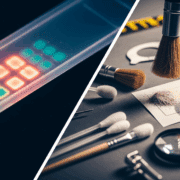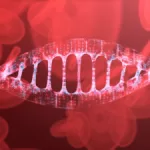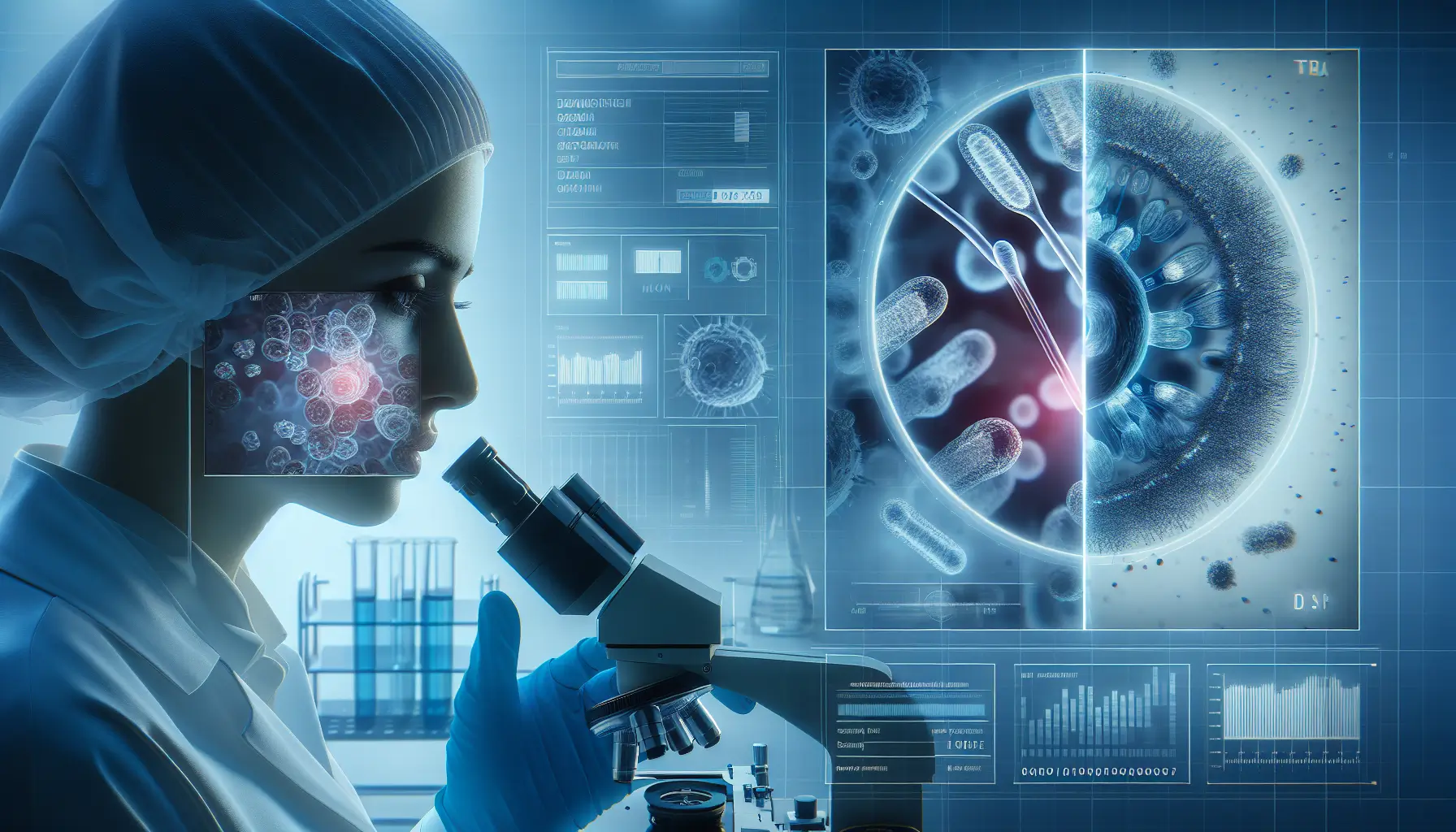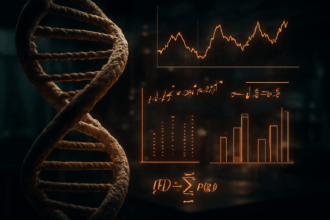Forensic science Discover the fascinating field of Forensic Science, the application of scientific principles to legal matters. This post delves into its many disciplines, from DNA analysis to crime scene investigation, its importance in the justice system, Read Full Definition has long relied on DNA
Discover the fascinating field of Forensic Science, the application of scientific principles to legal matters. This post delves into its many disciplines, from DNA analysis to crime scene investigation, its importance in the justice system, Read Full Definition has long relied on DNA DNA, or Deoxyribonucleic Acid, is the genetic material found in cells, composed of a double helix structure. It serves as the genetic blueprint for all living organisms. Read Full Definition evidence
DNA, or Deoxyribonucleic Acid, is the genetic material found in cells, composed of a double helix structure. It serves as the genetic blueprint for all living organisms. Read Full Definition evidence Evidence is any form of proof, such as objects, materials, or scientific findings, presented to establish or disprove a fact in a legal proceeding. It is used to reconstruct events and link or exclude individuals Read Full Definition to link perpetrators to sexual assaults. However, when traditional tests—such as detecting sperm in the victim’s sample—fail (for example, in cases where a condom is used), forensic investigators often hit a dead end. New research published in iScience on February 12, 2025, introduces the concept of the “sexome,” a unique genital microbiome transferred between partners during intercourse. This innovative approach may offer an alternative way to identify perpetrators in sexual assault cases.
Evidence is any form of proof, such as objects, materials, or scientific findings, presented to establish or disprove a fact in a legal proceeding. It is used to reconstruct events and link or exclude individuals Read Full Definition to link perpetrators to sexual assaults. However, when traditional tests—such as detecting sperm in the victim’s sample—fail (for example, in cases where a condom is used), forensic investigators often hit a dead end. New research published in iScience on February 12, 2025, introduces the concept of the “sexome,” a unique genital microbiome transferred between partners during intercourse. This innovative approach may offer an alternative way to identify perpetrators in sexual assault cases.
Introduction
Historically, forensic investigations focused on DNA and physical evidence, often overlooking other biological markers. Traditional methods, though powerful, have limitations in cases with low sperm yield or in condom-protected assaults. The 2009 National Research Council report highlighted gaps in forensic evidence methods, paving the way for alternative techniques such as microbial profiling.
Defining the Sexome
The “sexome” refers to the distinct bacterial community present on the genitalia of each individual. Just as every fingerprint is unique, so too is the microbial makeup of our genital areas. Researchers have discovered that during sexual intercourse, partners exchange portions of their genital microbiome, leaving behind a microbial signature that can be traced and identified.
Study Design and Methodology
In this pioneering study, 12 monogamous heterosexual couples participated in an investigation into the forensic potential of the sexome:
- Sample Collection: Each participant collected genital swab samples prior to intercourse using sterile techniques. Advanced RNA gene
 Genes are DNA segments (or RNA in some viruses) that dictate cellular processes, traits, and hereditary information, promoting genetic diversity and evolution in living organisms. Read Full Definition sequencing was employed to profile the bacteria down to the sub‑species level, establishing a unique microbial signature for every individual.
Genes are DNA segments (or RNA in some viruses) that dictate cellular processes, traits, and hereditary information, promoting genetic diversity and evolution in living organisms. Read Full Definition sequencing was employed to profile the bacteria down to the sub‑species level, establishing a unique microbial signature for every individual. - Intercourse and Post‑Sampling: After a period of abstinence (ranging from 2 to 14 days), couples engaged in sexual intercourse. New samples were collected within 3–12 hours post‑intercourse.
- Condom Use and Additional Factors: Among the couples, three reported using condoms. The study revealed that while condom use affected the extent of microbial transfer, it did not entirely prevent the exchange of bacteria. Additional factors such as circumcision status and the presence of pubic hair were also examined; neither showed a significant impact on bacterial transfer, although the vaginal microbiome’s composition did vary during menstruation.
Key Findings
- Microbial Transfer Confirmed: Unique bacterial signatures from each partner were detectable in their partner’s post‑intercourse samples. Even when condoms were used, microbial transfer was observed—with the majority of transfer occurring from the female to the male.
- Forensic Implications: “This research is based on the forensic concept that every contact leaves a trace,” explains Dr. Brendan Chapman of Murdoch University. These findings suggest that, in cases where traditional sperm detection fails, the sexome could serve as a valuable forensic tool for identifying perpetrators.
- Impact of External Factors: While factors such as circumcision and pubic hair did not significantly alter microbial exchange, variations in the vaginal microbiome during menstruation were noted, indicating that timing may influence forensic microbial analysis.
Applications in Forensic Casework
The identification of the sexome opens new avenues in forensic investigations:
- Supplementary Evidence: In instances where conventional DNA evidence is absent, microbial profiling can provide alternative forensic evidence.
- Extended Sampling Window: Since microbial traces can persist even after sperm degrades, this method may extend the window of opportunity for collecting forensic evidence.
- Enhanced Case Resolution: The ability to detect microbial transfer—even in condom-protected assaults—offers law enforcement a supplementary tool to reconstruct sexual contact and potentially identify perpetrators.
Limitations and Future Directions
- Current Limitations: The application of sexome analysis in forensic casework remains in its early stages. External factors such as menstrual cycle variations and environmental influences require further investigation.
- Future Research: Continued studies are needed to refine sequencing techniques, assess long‑term microbial stability, and expand the research to diverse populations. Integration with existing forensic protocols and further validationValidation, often referred to as method validation, is a crucial process in the laboratory when introducing a new machine, technology, or analytical technique. It involves a series of systematic steps and assessments to ensure that Read Full Definition are critical next steps.
Conclusion
This groundbreaking study reveals that the “sexome”—the unique bacterial community on the genitalia—is transferred between partners during sexual intercourse. This microbial exchange, detectable even in condom-protected cases, offers a promising new forensic tool for sexual assault investigations. By tracing these microbial signatures, forensic experts may soon have an alternative method to identify perpetrators when traditional DNA analysis falls short.
Paper Reference
Bacterial transfer during sexual intercourse as a tool for forensic detection, iScience (2025). DOI: 10.1016/j.isci.2025.111861. www.cell.com/iscience/fulltext … 2589-0042(25)00121-X











